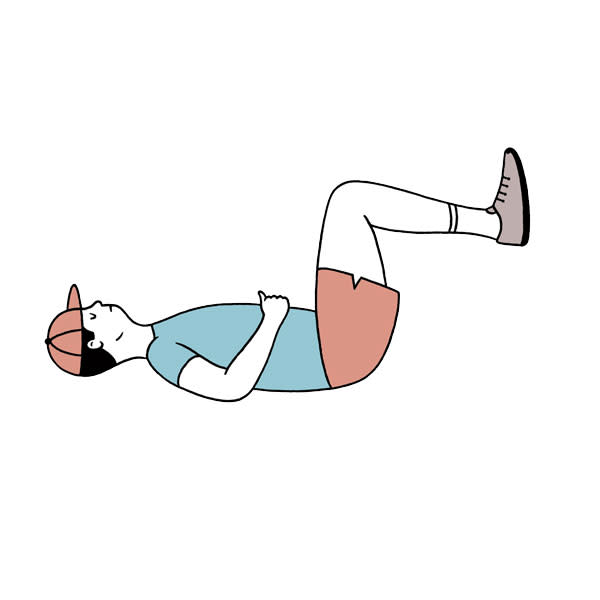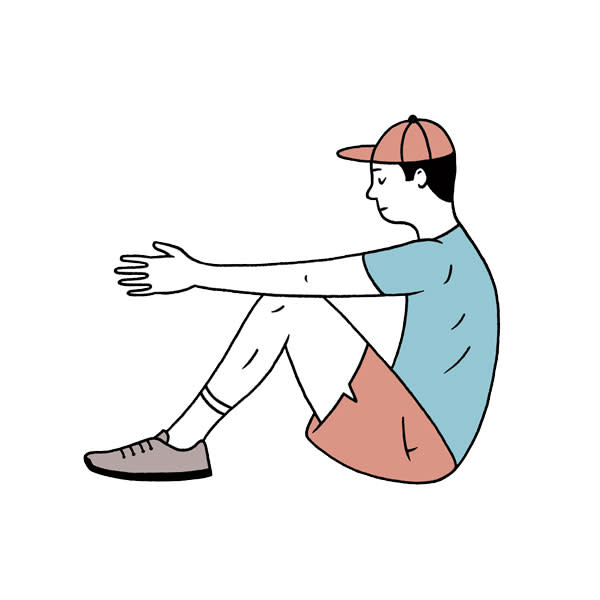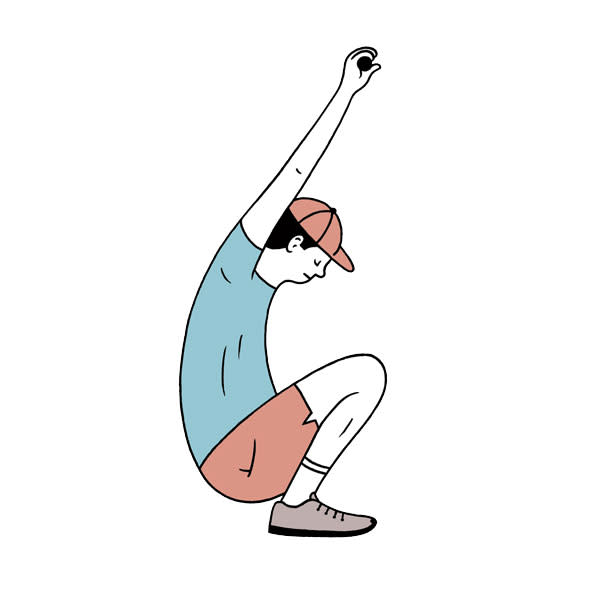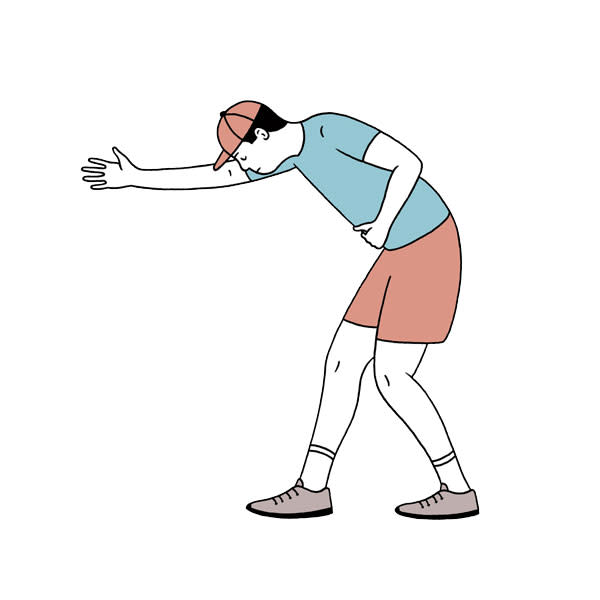How To Recalibrate Your Breathing To Combat Injury

In 2016 musculoskeletal problems accounted for 30.8 million sick days in the UK, at a cost of £7.4bn to the economy. Back and knee injuries, we're told, are inevitable as we age and our bodies succumb to wear and tear; however earlier this year the Guardian highlighted the increasing epidemic of untreatable conditions. These are the cases that perplex doctors and traditional treatment methods by physiotherapists, osteopaths and chiropractors (you know the ones; you've been paying £60 a week for a year to get your back treated, experience a light relief each time but the condition is never corrected and the pain is always there. In your quest to be cured you try all matter of treatments and, in turn, your bank account also sustains an injury, which only makes things worse).
At the forefront of this decade's wellness revolution, those belonging to the xennial and millennial generations are actively seeking out progressive treatments for conditions that have left their local GP's scratching their head. One particular method, Postural Restoration (PR), is generating excitement within the fitness arena and spearheaded in the UK by Luke Worthington at Third Space in Soho, London. Conceived by Ron Hruska at the University of Nebraska in 2000, 'PR' challenges traditional diagnostics by focusing on diaphragmatic breathing, the nervous system and the body as a whole to aid recovery and improve health.
Our body is a finely tuned machine. Though most of the time things run smoothly, one negative change can throw the entire system out of sync. As a result, chronic pain and recurring injuries can prove difficult to overcome. Hruska summarises that because the right hemidiaphragm is larger (than the left) and is located lower down in the body, when flattened (due to stress, or bad posture or a multitude of other reasons), it causes the body to be pulled forward and to the right with each breath. This in-turn has a knock-on effect as the brain is wired to keep the head forward and eyes straight, so the body naturally realigns to keep the head intact. This results in the overuse of one knee or one hip. Subsequently, your gait will be off and over time this can lead to physically impending injuries.
You may not even realize that your body is out of alignment. Do you naturally find that you shift your weight onto your right leg when standing? I had exhausted the system over an 18-month period when I accidently discovered PR earlier this year. I'd sustained a knee injury during Tough Mudder in October 2015, which had subsequently led to a lower back injury. I was 36, in the best shape I'd ever been, and couldn't understand how I'd suddenly become immobile and in chronic pain. Surprisingly, the diagnosis' ranged from ITB problems (osteopath), cartilage (private orthopedic surgeon), slipped discs (NHS orthopedic surgeon), herniated discs (GP), twisted fibula bone (biomechanical podiatrist), psychosomatic (a muscle whisperer), weakness in my left quad (physiotherapist), modic changes/bacterial infection (spine & joint specialist) and an aggravated nerve (chiropractor neurologist). Each specialist, confident their diagnosis was superior, suggested treatments ranging from surgery (removing my discs and fusing my lower vertebra together or removing pieces of cartilage from my left knee), steroid injections, insoles, foam rolling, an intensive course of antibiotics, diazepam, tramadol and isolation training. Fortunately, I declined any offer of surgery (and the £5,000 price tags) and the other treatments were either ineffective or increased symptoms. An interesting observation in hindsight is that each specialist I saw only focused on treating the isolated area of pain and never my system as a whole. They were also very expensive.

By chance, and on recommendation from a friend, I met Luke Worthington who is currently the only qualified postural restoration trainer in the UK. During his professional Rugby career Luke sustained a recurrent shoulder, knee and back injury which ended his career aged 24. When UK treatments were unsuccessful he began conducting his own research into injury mechanisms and discovered the work of Eric Cressey and Mike Reinold in Boston (the training centre for the major league baseball players and world leaders in shoulder care). Luke travelled to Boston to observe how they rehabilitated baseball players and was introduced to postural restoration techniques. He was fascinated by Hruska's ingenious and effective techniques and decided to train as a specialist, via an intensive 10-year course.
I can't say that I wasn't the least bit cynical following a long period of conflicting advice. The PR assessment included monitoring the range of movement in my shoulders, hips, back and knees, my center of gravity, my breathing and left/right strength ratios. Luke's diagnosis was the first to almost perfectly describe how my body felt; the mechanics that were out of sync, muscles that I was over using/not using (left hamstring and hip adductor) and how my breathing was wrong. He put me through a series of Hruska's exercises. Remarkably, the results were instant; the tension in my body dispersed, the pain disappeared and I felt my center of gravity even out. I walked out a different person (and straight into a versaclimber class the following day).
Via a weekly training program with Luke I have regained my mobility, am back in shape and am continuing to build substantial strength. He has also recalibrated my approach to fitness. My focus has shifted to functional training; I want to build a more agile body that will serve me well into old age and prevent this sort of injury from happening again. I've recommended many people to Luke since, all of whom have found it an educational and enlightening experience.
In retrospect my body had been out of alignment for sometime before I sustained my injury, but I wasn't in any physical pain so continued to push myself in the gym.
My advice? Don't be complacent like I was and think you are invincible. I was chasing the archetypal masculine physic with such hunger I was unaware of what was going on internally. Postural Restoration is much a tool for injury prevention as it is treatment.
Luke outlines the four best PR exercises designed to realign the body and correct the diaphragm.
90-90 hip lift

"We start people in a lying-down position because it is the least threatening (neurologically). Once you have that mastered, progress through seated to standing. The brain's perception of threat will lock movement down so working in 'safe' positions minimises that risk."
(Use heels to push down against the wall to raise your bottom around an inch off the floor.)
Long seated exhale with reach

"Inhale and exhale five times, and pause for 2 seconds each time the lungs are empty. On the exhale, draw your ribcage inwards to compress the diaphragm."
Push down on your left heel so the exercise fires up the left hamstring and abductor
Deep squat belly breathing

"This exercise works the diaphragm into a neutral position while restoring it to a zone of apposition (mushroom shape). The squat also reduces the rotational pull the diaphragm puts on the rib cage and spine."
While holding onto a bar with an overhand grip, squat (bottom touching heels) before doing 10 deep inhales and exhales.
PRI wall squat

"This exercise takes the spine out of extension to reduce pressure on the sympathetic ganglion (the part of the brain that controls the 'fight or flight' response), allowing it to shut down."
Flex the spine forward so only the middle of the back touches the wall. Inhale and exhale as with the other exercises, but stretch arm out on the exhale.
For more information or to book a consultation with Luke Worthington visit thirdspace.london
You Might Also Like

